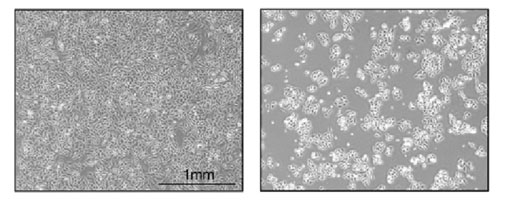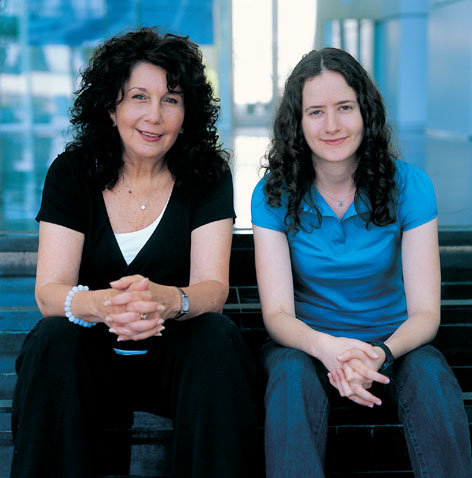The scientists of the Weizmann Institute discovered that the "emergency pathway for protein production" is not limited to action in emergency situations only, and that the cells also use it in "everyday life"

Extreme situations call for extreme reactions. Therefore, cells that enter a state of stress stop the ongoing production of the non-essential proteins, which build and maintain the cell in "times of peace", and activate an alternative "emergency pathway", in which only "first aid proteins" are produced that are essential for the cell's ability to deal with the crisis in a way immediate This coping can be done in one of two ways: improving the cell's ability to survive, or, in cases where the cell is severely damaged, by activating a mechanism that causes it to lose its sense of self. The purpose of this suicide mechanism, called "apoptosis" (the name is derived from the Greek word describing falling), is to prevent serious damage that the damaged cells may cause to the integrity and health of the living body. The genes that encode the "first aid proteins", of both types, carry a special identification tag. This tag, called IRES, enables the translation of genetic information in a mechanism different from the usual one, and therefore it allows the cell to produce proteins even in the extreme conditions where the normal mechanism is paralyzed.
Until now, the scientists believed that the "peacetime track" is activated during periods of calm, while the "emergency track" is activated only during times of stress. This perception is changing these days, following a new study by Weizmann Institute of Science scientists, the findings of which show that the emergency pathway also operates in times of peace - in parallel with the routine protein production pathway. The scientists, led by Prof. Adi Kimchi, from the department of molecular genetics at the Weizmann Institute of Science, report in an article recently published in the scientific journal Molecular Cell, that two genes, which play a role in cell survival processes, operate and produce proteins in the "emergency pathway" even in cells growing under Normal, when they are not exposed to the bar.
These surprising results were discovered by chance. A few years ago, Prof. Kimchi isolated a gene that encodes a certain protein that is related to the emergency pathway, called DAP5. In another study, carried out together with research student Sivan Henis-Kornblit, the researchers found that the DAP5 protein binds to the IRES tag, and in this way controls the unconventional mechanism of genetic information translation. In the current study, Prof. Kimchi sought to expand the information on the role of this protein in the cell. This is how she and research students Noa Lieberman and Leah Marsh created cells that do not produce the DAP5 protein. To their surprise, it became clear to them that these cells suffer from increased mortality,

Even when they are not exposed to stress. It was later discovered that death occurs at a specific stage in the cell's life cycle: at the stage when it divides, and that it is caused by the activation of the cellular "suicide mechanism". That is, in the cells that contain it, DAP5 prevents the sequence of events that ultimately leads to planned suicide of the cell. When it is missing, the cells lose themselves to know. However, how exactly does the protein prevent cell suicide?
To identify the genes that DAP5 affects, the researchers used two different approaches. In one approach, approximately 200 genes related to the cell life cycle and programmed cell death were scanned, with the aim of locating those whose production process binds to the DAP5 protein. In the second approach, the scientists looked for the proteins in which quantitative changes occur in the presence of DAP5 - or in its absence. Using both methods, the researchers located two genes that are affected by DAP5 and are associated with it: the CDK1 gene, whose activity is known to be essential during cell division, and to maintain its ability to survive at this stage; and the Bcl-2 gene - which is recognized as a gene that prevents apoptosis (and also plays a role in cancer processes). Both genes carry the "identification tag" which sends them to the emergency route. When the researchers created cells that do not produce DAP5, but "compensated" them with increased production of Bcl-2 and CDK1, cell death was prevented to a large extent - but not completely. The researchers conclude from this that DAP5 affects additional genes related to cell survival, which have not yet been identified.
The results of the study show that the "emergency pathway" is not limited to action in emergency situations only, and that the cells also use it in "everyday life", and more frequently than it would be common to think. In addition, they reveal another way that allows the cell to regulate the expression of pro-survival genes - under the control of DAP5. At this stage, the research opens up new questions: do the emergency route and the routine route exist at the same time, or alternately? What do the cells gain from the existence of two protein production pathways, even in normal times - without stress? In the future, Prof. Kimchi intends to learn more about the alternative pathway - what are the types of genes operating within it, the times when it is activated and the situations in which it is required, with the aim of revealing the logic and benefit of its existence.
